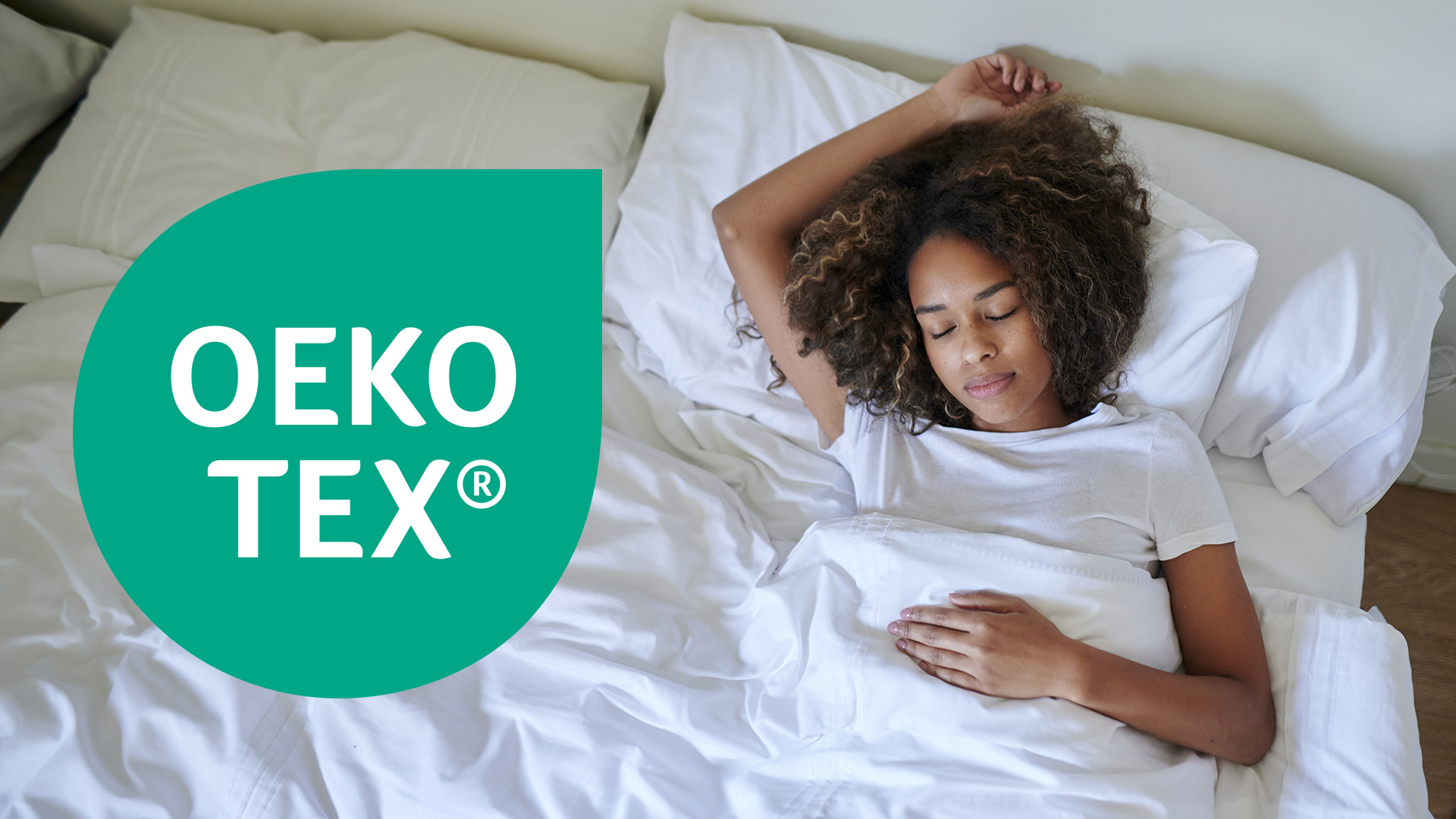What is OEKO-TEX? And what does this certification mean for your mattress?
OEKO-TEX is a textile safety certification, but what does it mean for your sleep setup?

To ensure your sleep setup is safe and healthy, you need to navigate the tricky world of product certifications. In this guide, we’ll explore the OEKO-TEX certification and what it means for you, your mattress, and your health.
OEKO-TEX is a textile certification. It’s awarded to textile products that have met certain health and safety requirements. There are several different types of OEKO-TEX certifications, but the most common is Standard 100, and this is the type generally awarded to mattresses.
Browse through our best mattress guide and you’ll find mention of several safety certifications. Each certificate typically covers a different part of the mattress. For example, if you see CertiPUR-US certification, it refers to the foams in a mattress (that’s why it crops up regularly in our best memory foam mattress guide). A latex mattress, on the other hand, might receive eco-INSTITUT certification. We want you to know what you’re getting with a mattress, so in this guide, we’re taking a close look at what OEKO-TEX certified means and why it’s a standard you can trust.
What does OEKO-TEX Standard 100 mean?
OEKO-TEX Standard 100 is a global safety certification given to textiles that meet set health and safety standards. It can be applied to any textile article that meets the criteria, including mattresses. OEKO-TEX Standard 100 tests for a wide range of substances that might pose a health risk. To receive certification, every part of the textile product must be tested, including linings, fastenings, coatings, and even the threads. For mattresses, an OEKO-TEX certification generally refers to the cover.

What does OEKO-TEX Standard 100 test for?
Before a textile can be OEKO-TEX Standard 100 certified, it has to go through a round of vigorous testing. OEKO-TEX tests for a number of regulated and non-regulated substances that might be considered harmful to human health. The criteria is refreshed at least once a year, to stay up-to-date with recent scientific developments. You can find more information in the OEKO-TEX Standard 100 testing criteria catalog.
What are OEKO-TEX Product Classes?
Every product tested by OEKO-TEX Standard 100 is sorted into one of four product classes. The product class is determined by the use of the material, primarily, how close it comes into direct contact with the skin. There are differing requirements and limit values to each product class.
Product class 1: Items in product class 1 are intended for babies. As babies typically have the most sensitive skin, this is the strictest product category.
Sign up for breaking news, reviews, opinion, top tech deals, and more.
Product class 2: Items in product class 2 have direct contact with the skin. This includes most clothing, as well as underwear. Mattresses fall under this category.
Product class 3: The items in product class 3 have minimal or no skin contact. This includes clothing such as jackets and belts.
Product class 4: The least strict, product class 4 primarily covers decorative materials such as curtains and upholstery.
What does OEKO-TEX Made in Green mean?

The Made in Green label builds on the foundation of the Standard 100 certificate, with an eco-conscious addition. There are four key requirements for a product to be labeled OEKO-TEX Made in Green. These requirements are:
Environmentally friendly production
All Made in Green productions must demonstrate responsible handling of waste water, effective chemical and waste management, and a focus on protecting resources.
Product and consumer safety
All components of a Made in Green product must undergo health and safety testing to ensure no harmful substances have been used. (Essentially, it must meet either Standard 100 or Standard Leather requirements.)
Social responsibility
Any Made in Green certified manufacturing facility must show fair and safe working conditions, and occupational safety precautions.
Traceability and transparent supply chains
Consumers should be able to easily access information about the testing the product has undergone and the facility in which it was made. Each product should have a unique ID or QR code to facilitate this tracing.
What does OEKO-TEX Organic Cotton mean?
The OEKO-TEX Organic Cotton certification is used exclusively for cotton products. All OEKO-TEX Organic Cotton products have been tested for pesticides and other harmful substances, declared GMO-free, and can be traced through a verified chain of custody. Products containing 100 percent organic cotton receive the OEKO-TEX Organic Cotton label. Products containing a minimum of 70 percent organic cotton receive the OEKO-TEX Organic Cotton Blended label. Any less than this, and the product receives the Standard 100 certification instead.

Is OEKO-TEX Trustworthy?
Yes, OEKO-TEX is a trustworthy organization. Founded in 1992, OEKO-TEX functions as an independent product safety tester. OEKO-TEX operates on a global scale, with offices worldwide and institutes in Europe and Japan. The OEKO-TEX test criteria is globally standardized and updated at least once a year, to meet current scientific guidelines and statutory requirements.
As well as the testing standards covered above, OEKO-TEX also operates the Leather Standard, the STeP sustainable production certificate, the Eco Passport, and the Responsible Business management tool. You can find further information about each certification on the OEKO-TEX website.

Ruth is TechRadar’s Sleep Writer. She’s here to help you find the perfect sleep setup for your budget and personal preferences. As well as keeping a keen eye on everything that’s going on in the world of mattresses, she regularly speaks to experts to help you learn how to improve your sleep habits, whether that’s by debunking sleep myths or explaining the science behind it all. Prior to joining the TechRadar team, she wrote features and product guides for new parents hoping to get a decent night's sleep, as well as writing for a variety of online spaces.